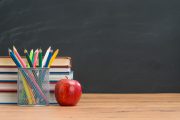
The American Academy of Pediatrics (AAP) delivered a statement on Monday encouraging government officials and school administrators to allow students to return to class in the fall, regardless of the COVID-19 pandemic. The reputable medical organization declared the coronavirus to be a lesser threat than abuse, drug use, and suicide, all of which pose a major risk to many children who are stuck at home during forced lockdowns and closures. But the statement failed to call into question some of the controversial COVID-19 policies that have been implemented during the pandemic and encourages their continued use, even as some experts continue to question their effectiveness and safety.
The Daily Wire observes AAP’s statement comes just as coronavirus cases are reportedly increasing in states such as Florida, California, and Texas, prompting lawmakers to scale back on some of the reopening phases, even though death rates continue to drop despite the uptick in cases. In both Texas and Florida, bars that were recently allowed to reopen have been ordered to close in response to the uptick in cases. Similar orders have come in various cities and counties throughout the country.
But the AAP is encouraging schools and local leaders not to allow the fluctuations in COVID-19 cases to impact the start of the school year.
The statement reads,
The AAP strongly advocates that all policy considerations for the coming school year should start with a goal of having students physically present in school. The importance of inperson learning is well-documented, and there is already evidence of the negative impacts on children because of school closures in the spring of 2020. Lengthy time away from school and associated interruption of supportive services often results in social isolation, making it difficult for schools to identify and address important learning deficits as well as child and adolescent physical or sexual abuse, substance use, depression, and suicidal ideation. This, in turn, places children and adolescents at considerable risk of morbidity and, in some cases, mortality.
According to Newsweek, online child sex abuse cases have quadrupled since the start of the pandemic compared to one year ago, based on data from the National Center for Missing & Exploited Children (NCMEC). And while the number of reported cases of child abuse have dropped since the start of the pandemic, likely because the lockdowns have made it easier for child abuse to go unnoticed, hospitals have reported they are treating more severe child abuse injuries. The York Daily Record reports there has been an uptick in such severe cases at Pennsylvania hospitals that correlates to the first stay-at-home orders put in place by Governor Tom Wolf in mid-March.
The group cited the “substantial impact” on children’s physical health and nutrition in the absence of school meals and recess/gym, while simultaneously noting the coronavirus is significantly less dangerous to young people, particularly those with healthy immune systems.
And the effects on students’ educational attainments are predictably dramatic. The Huffington Post cites a research paper by the Annenberg Brown University that estimates as many as 55 million American children out of school as a result of the coronavirus pandemic have lost approximately one-third of their progress in reading and as much as half of their progress in math.
The statement also compares COVID-19 and other influenza outbreaks, noting that influenza poses a greater risk to young people:
SARS-CoV-2 appears to behave differently in children and adolescents than other common respiratory viruses, such as influenza, on which much of the current guidance regarding school closures is based. Although children and adolescents play a major role in amplifying influenza outbreaks, to date, this does not appear to be the case with SARS-CoV-2. Although many questions remain, the preponderance of evidence indicates that children and adolescents are less likely to be symptomatic and less likely to have severe disease resulting from SARS-CoV-2 infection. In addition, children may be less likely to become infected and to spread infection.
AAP also states that any COVID-19 policies should merely aim to “mitigate, not eliminate risk” because “no single action or set of actions will completely eliminate the risk of SARS-CoV-2 transmission.” The statement goes on to offer a series of “mitigating” policies that can be implemented at each education level, including social distancing and face masks. The guidance also offers suggestions for disinfecting and cleaning educational facilities.
But while the AAP’s statement makes a number of important points about returning to a sense of normalcy in the midst of the public health crisis, it maintains some of the controversial talking points that have pervaded COVID-19 discussions, including the alleged effectiveness of the face masks in stemming the spread of the virus. The guidance also discourages schools from relaxing immunization guidelines even as parents have had a difficult time getting their children in for so-called wellness visits and following the vaccine schedule as a result of the pandemic — and many parents do not want their children vaccinated. In fact, the guidance encourages schools to add the influenza vaccine to the list of immunizations required for school attendance. The statement also encourages continued social distancing, even as reputable scientists have cautioned that continued lockdowns and social distancing are harmful to the immune system and can cause people to be dangerously vulnerable to new viruses.
Photo: Wirachai/iStock/Getty Images Plus
Raven Clabough acquired her bachelor’s and master’s degrees in English at the University of Albany in upstate New York. She currently lives in Pennsylvania and has been a writer for The New American since January 2010.




